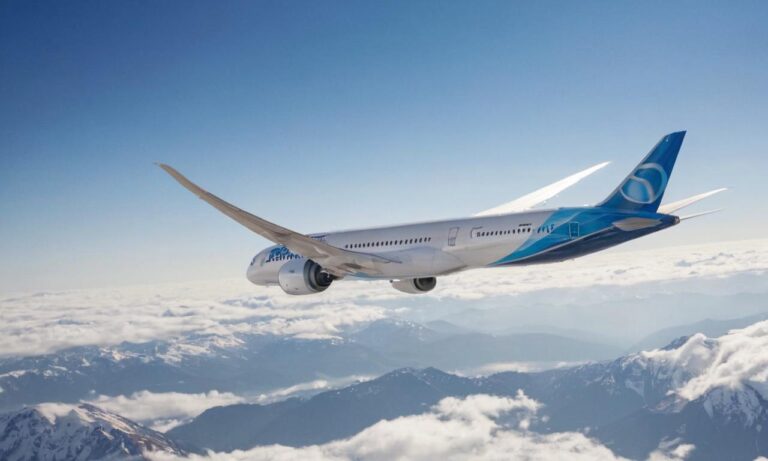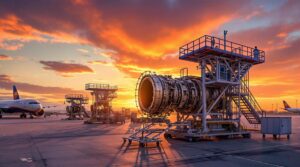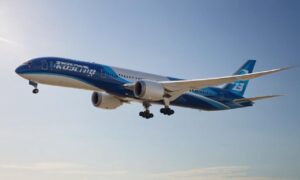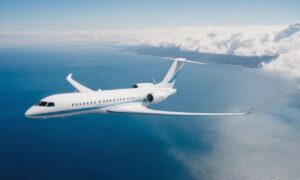The Boeing 787, commonly known as the Dreamliner, is a revolutionary aircraft that has redefined modern air travel. In this article, we will explore the dimensions and size of the Boeing 787, shedding light on its various features that contribute to its impressive stature in the aviation industry.
The Exterior Dimensions
The Boeing 787 comes in two main variants, the 787-8 and the larger 787-9. The 787-8 has a length of approximately 186 feet (57 meters), while the 787-9 is slightly longer, measuring around 206 feet (63 meters). Both variants boast a wingspan of about 197 feet (60 meters), showcasing the aircraft’s aerodynamic design and fuel efficiency.
Additionally, the height of the Boeing 787 stands at approximately 56 feet (17 meters), emphasizing its sleek and streamlined appearance. These dimensions collectively contribute to the aircraft’s ability to carry a substantial number of passengers and cargo efficiently.
The Interior Layout
Beyond its exterior, the Boeing 787 offers a spacious and comfortable interior for passengers. The aircraft’s cabin width of about 18 feet (5.5 meters) allows for a more open and airy atmosphere, enhancing the overall flying experience. The design prioritizes passenger comfort with larger windows, providing stunning panoramic views during the journey.
The Dreamliner’s interior is also characterized by its innovative use of materials, such as composite materials that make up a significant portion of the aircraft’s structure. This not only reduces the overall weight of the plane but also contributes to increased fuel efficiency and environmental sustainability.
Capacity and Range
One of the key factors that define the significance of the Boeing 787 is its impressive range and fuel efficiency. The aircraft is designed to cover long distances, with the ability to fly non-stop on routes that were previously challenging for other planes. The 787-8 can typically carry around 242 passengers, while the larger 787-9 can accommodate approximately 290 passengers.
Furthermore, the Dreamliner’s range is noteworthy, with the ability to cover distances of up to 7,530 nautical miles (13,950 kilometers). This extended range opens up new possibilities for airlines, allowing them to explore and establish long-haul routes with confidence.
Technological Advancements
It’s not just the size of the Boeing 787 that makes it remarkable; it’s also the incorporation of cutting-edge technology. The aircraft features advanced avionics, including the latest in-flight entertainment systems and connectivity options. The use of modern technology enhances the overall flying experience for passengers and improves operational efficiency for airlines.
The Dreamliner’s engines, made by various manufacturers, contribute to its fuel efficiency and reduced environmental impact. These technological advancements make the Boeing 787 a leader in the aviation industry, setting new standards for efficiency, comfort, and sustainability.
In summary, the Boeing 787 is a testament to the evolution of aviation technology, boasting impressive dimensions and innovative features. Its size, both externally and internally, contributes to its status as a game-changer in the airline industry. With a focus on passenger comfort, fuel efficiency, and advanced technology, the Dreamliner continues to shape the future of air travel.
Fuel Efficiency and Environmental Impact
One of the standout features of the Boeing 787 is its commitment to fuel efficiency and reduced environmental impact. The aircraft incorporates advanced technologies that not only enhance its performance but also contribute to a greener aviation industry. The Dreamliner’s engines are designed to minimize carbon emissions, aligning with the global push for more sustainable air travel.
Moreover, the use of lightweight composite materials in the construction of the Boeing 787 plays a pivotal role in improving fuel efficiency. These materials not only reduce the overall weight of the aircraft but also contribute to lower fuel consumption, making the Dreamliner an eco-friendly choice for airlines aiming to reduce their carbon footprint.
Environmental Sustainability Initiatives
Beyond its operational features, Boeing has initiated various environmental sustainability programs related to the 787. These initiatives focus on recycling and responsible disposal of aircraft components, emphasizing the company’s commitment to minimizing its ecological impact. This holistic approach underscores the importance of sustainability throughout the lifecycle of the Boeing 787.
Frequently Asked Questions
| Question | Answer |
|---|---|
| 1. What is the maximum range of the Boeing 787-9? | The Boeing 787-9 has a remarkable range of approximately 7,530 nautical miles (13,950 kilometers), making it suitable for long-haul flights. |
| 2. How does the Dreamliner contribute to environmental sustainability? | The Dreamliner incorporates fuel-efficient engines, lightweight composite materials, and Boeing’s sustainability initiatives to minimize its environmental impact. |
| 3. What is the significance of the Boeing 787’s cabin width? | The cabin width of about 18 feet (5.5 meters) creates a spacious and comfortable interior, enhancing the overall flying experience for passengers. |
Exploring Future Innovations
Looking ahead, Boeing continues to invest in research and development to bring about even more advancements in aviation technology. Future iterations of the Dreamliner may incorporate groundbreaking features, further solidifying Boeing’s position as an industry leader in innovation and sustainability.






